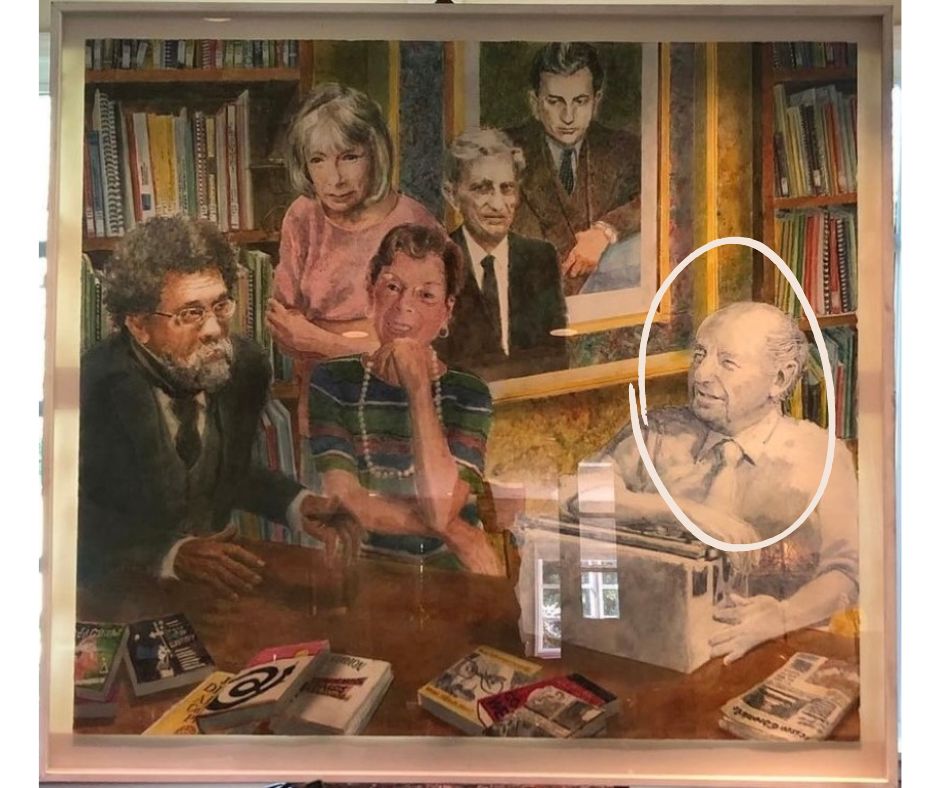I love this Jerald Silva painting of Sacramento literary luminaries featuring authors Cornel West, Joan Didion, Ann Bannon, Ernesto Galarza, and Herb Caen, soon to hang in the Central Library’s Sacramento Room, for lots of reasons. One is that my main character, Jane Benjamin, is based on Herb Caen.
When I first started writing what would turn into Copy Boy, I thought my protagonist would be a fictionalized version of nineteen year old Herb, who became an iconic San Francisco columnist.
My original protagonist (now Jane) was Johnny—a straight-up remake of Herb Caen’s prototype. It meant something to me that he was Sacramentan before he was San Franciscan—he called himself the Sackamenna Kid. His family home is minutes from my own. He wrote a column at Sacramento High School and reported sports in 1934 for the Sacramento Union.
He moved to San Francisco and wrote about the radio in 1936, before he began his own inimitable gossip column in 1938.
This was a provocative gap, when he moved from Sacramento to San Francisco, a period when he became a San Francisco man.
I wondered, what magic happened in that space between Sacramento and San Francisco? It appealed to my interest in the conflict between town and city. Bumpkin and urbanite. That is still in both Jane Benjamin Novels.
Then my story morphed, as stories will, and Johnny became Jane, a girl who pretends to be a boy to survive in San Francisco during the great depression, and begins to thrive as a boy—because, you know, opportunity. Still, she is a very particular boy, not unlike young Caen.
Like him, she becomes the friend of authors William Saroyan and Barnaby Conrad, bandleaders Benny Goodman and Artie Shaw, union leader Harry Bridges, physicist J. Robert Oppenheimer, crooner Frank Sinatra, and tycoon Louis Lurie. Like him, she will begin to grow beyond gossip to essential stories of the time and place in which she lives.
She becomes roommates with Rivka, who is based on Caen’s sister, Estelle, a Juilliard-trained pianist in the San Francisco symphony who also played on the NBC Blue Network radio show, a left-wing host of the salon where Jane first learns how to be a man.
Since writing Copy Boy, I have become more intrigued by Caen’s whole life—that he continued in his role as San Francisco’s witty conscience, through the decades until his death in 1997, chronicling the high and the low of the city by the bay, of which he says, “San Francisco isn’t what it used to be; yeah, but it never was.”
I loved inhabiting elements of Caen’s story in 1937, but I couldn’t help wondering, what did he experience in the forties, the fifties, the sixties…
I thought of author Vanessa Hua’s comment that “history is the floor, not the ceiling, of my fiction.”
This is why the Jane Benjamin Novels continue, now to Tomboy, and next to Poster Girl.

Leave A Comment